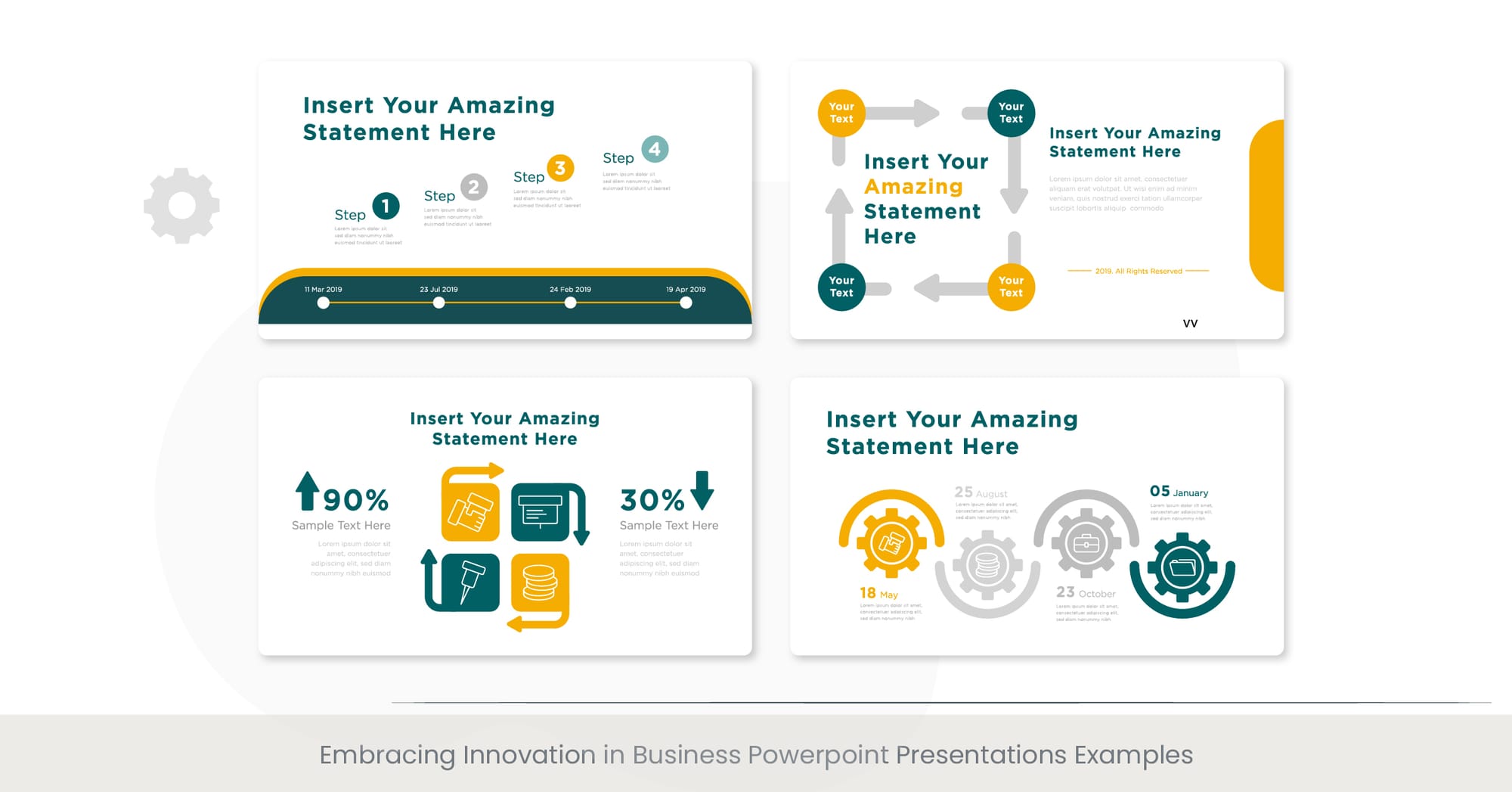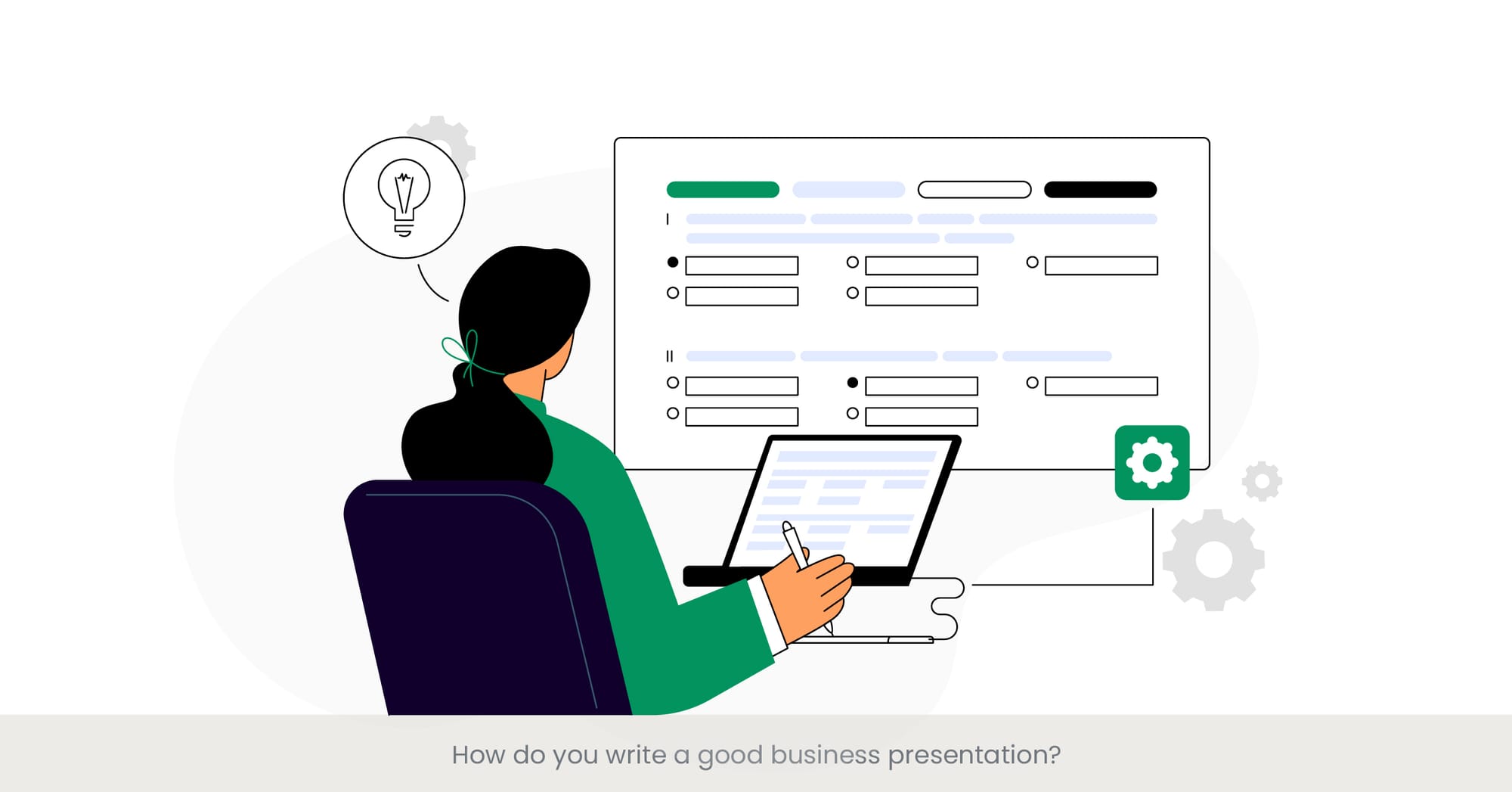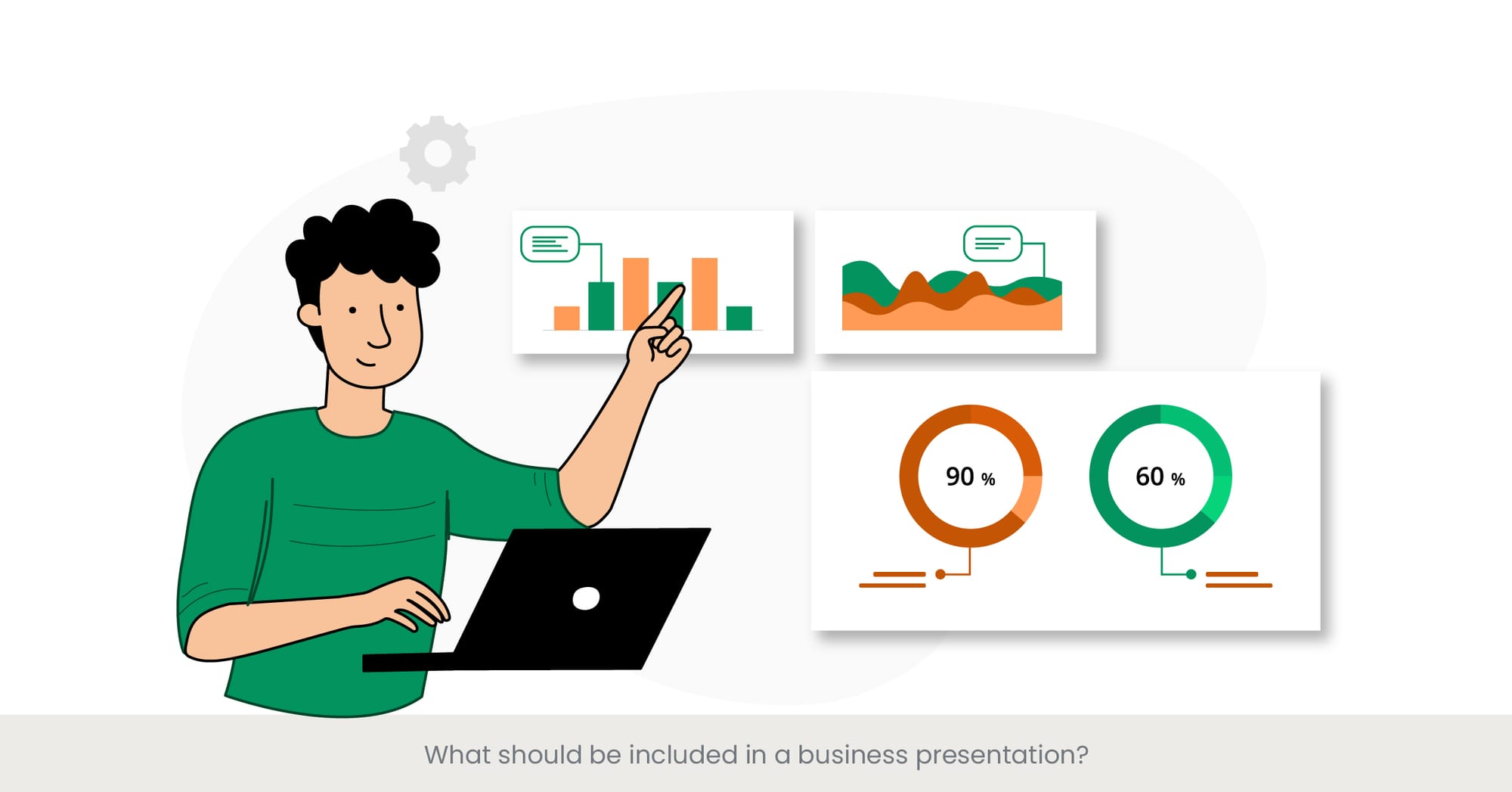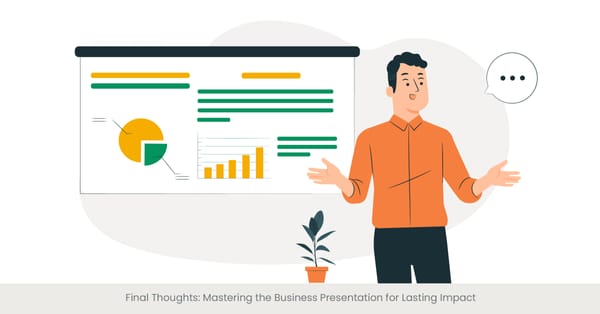
Success Stories and Insights from Accomplished Presenters

Engaging the Audience: Lessons from the Masters
Every remarkable example of business presentation is underpinned by a story of perseverance, innovation, and the relentless pursuit of excellence. Accomplished presenters often share common traits: an unwavering commitment to their message, an empathetic understanding of their audience's needs, and a dynamic presentation style that captivates and educates.
This overview explores the success stories of those who have mastered the art of business presentations, offering insights into the strategies that propelled their presentations from good to unforgettable.
Digging deeper into the essence of successful examples of business powerpoint presentation examples, one finds a pattern of certain inexorable traits among top presenters. These individuals possess a deep knowledge of their subject matter, allowing them to speak with authority and confidence. Preparation and practice are their credo, ensuring that every aspect of their presentation, from the slide deck to the delivery, is polished and professional.
By examining the best business presentation examples as set by industry leaders, we can glean that their success often hinges on their ability to tell a compelling narrative, making complex information accessible and engaging to their audience.
Real-World Examples: Stories of Triumph
The business world is replete with examples of presentations that have left an indelible mark on their audience. Consider the iconic presentation of company examples like Steve Jobs unveiling the iPhone, a masterclass in blending storytelling with a visually appealing presentation. Or the corporate presentations by Sheryl Sandberg on leadership and resilience, which combine personal anecdotes with actionable insights.
These examples underscore the power of presentations that are not only informative but also deeply moving and motivational, showing how a well-crafted message can inspire action and change.
To understand the impact of these success stories, it's crucial to look at the data and research that underscore the effectiveness of exceptional presentation skills. Studies have shown that presentations incorporating elements like visual aids, engaging narratives, and a clear, concise message are more likely to retain audience attention and achieve their objectives.
For instance, a survey by a presentation design agency revealed that audiences are 43% more engaged by presentations that use stories and visuals compared to text-heavy slides. Further, research published in the Journal of Business Communications found that presenters who practice active engagement techniques can increase audience retention rates significantly, highlighting the tangible benefits of adopting the strategies used by accomplished presenters.
Common Traits Among Successful Business Presenters

The Blueprint of Excellence: Unraveling the Core Traits
In the realm of impactful business presentations, certain attributes stand out as universal markers of success. These traits, consistently observed among the most successful business presenters, form a blueprint for others to follow.
At the heart of these presentations lies not just the mastery of content but also the ability to connect with the audience on a personal level. This introductory exploration delves into the characteristics that distinguish exceptional presenters, including their preparation, adaptability, and innate ability to tell a story that resonates.
The foundation of any memorable business powerpoint presentation is thorough preparation and an in-depth understanding of the topic at hand. Successful presenters are often distinguished by their dedication to mastering their material, which enables them to speak with confidence and authority. This level of preparation includes not only the assimilation of facts and figures but also an understanding of the audience's expectations and how best to meet them.
A deep dive into the background of high-stakes corporate presentations reveals meticulous research and rehearsal processes, often involving teams of experts and presentation design agencies to refine content and delivery.
Storytelling: The Heartbeat of Engagement
At the core of every compelling business presentation is storytelling. This age-old technique is what transforms a standard presentation into an engaging narrative that captures the audience's imagination.
Whether it's a company presentation example that outlines a journey of growth and innovation or a technical presentation that makes complex data accessible, the ability to weave facts into a narrative is what sets successful presenters apart.
Real-world examples abound, from TED Talks that have sparked global conversations to corporate presentations that have redefined industries, all underscoring the power of a well-told story.
The effectiveness of these common traits among successful presenters is not just anecdotal; it's supported by a body of research. Studies have consistently shown that presentations that are well-prepared, audience-centric, and story-driven are more likely to achieve their objectives.
For instance, research from presentation experts and agencies specializing in business presentation design has highlighted the significant impact of storytelling on audience engagement and retention.
Additionally, surveys conducted among business professionals reveal a strong correlation between a presenter's ability to connect with their audience and the overall success of their presentation, with successful presentations often featuring a mix of compelling narrative, visual appeal, and clear, actionable messages.
Overcoming Personal Challenges in Presentation Delivery

Confronting the Giants: Navigating Personal Hurdles
The journey to becoming an accomplished presenter is often paved with personal challenges and fears. From stage fright to the struggle with engaging storytelling, these hurdles can seem insurmountable. However, the tales of those who have faced and overcome these obstacles serve as a beacon of hope for many.
This section explores the common personal challenges encountered in presentation delivery and the strategies successful presenters have employed to transcend them, highlighting that the path to excellence is through perseverance and self-improvement.
Behind many presentation challenges lie deep-seated fears and anxieties. From the fear of public speaking, known as glossophobia, to the apprehension of being judged, these fears can cripple even the most knowledgeable presenter.
A closer look at these challenges reveals a complex interplay of psychological and physical factors. Successful presenters often share their journeys of understanding and confronting these fears, emphasizing the importance of preparation, mindfulness, and gradual exposure as key strategies for overcoming them. By demystifying the sources of their anxiety, they pave the way for more confident and effective presentations.
Triumphs of Resilience: Real-Life Success Stories
The business world is rich with stories of individuals who turned their presentation challenges into triumphs of resilience. Consider the CEO who overcame a debilitating fear of public speaking to lead a pivotal company presentation, employing techniques such as visualization and positive affirmation to shift their mindset.
Or the introverted tech innovator who mastered the art of engaging presentations by embracing their authentic storytelling voice, utilizing video presentations and interactive presentations to connect with their audience. These examples not only serve as inspiration but also demonstrate practical approaches to overcoming personal hurdles in presentation delivery.
The effectiveness of confronting and overcoming presentation challenges is not merely anecdotal; it's supported by scientific research. Studies in the fields of psychology and business communication have shown that preparation and practice are crucial in reducing anxiety and improving presentation skills.
For instance, a study published in the "Journal of Effective Teaching" found that presenters who engaged in systematic practice and received constructive feedback showed significant improvement in their delivery and audience engagement.
Another research piece highlighted the role of technology, such as presentation software and video presentation templates, in helping presenters simulate and prepare for their actual presentations, thereby increasing their confidence and effectiveness.
Adapting Lessons from Notable Business Presentation Examples Fails

Learning from Missteps: The Value of Reflection
The road to mastering business presentations is often marked by setbacks and failures. However, these missteps provide invaluable lessons that can propel individuals towards greater success.
This section delves into the importance of learning from notable business presentation fails, emphasizing that reflection and adaptability are key to avoiding similar pitfalls in your own presentations in the future. By examining high-profile presentation mishaps, we uncover the critical insights and strategies that can help presenters turn their past failures into stepping stones for success.
Throughout history, the business world has witnessed its fair share of presentation fails that have served as cautionary tales for presenters everywhere. These incidents range from technical glitches that derailed major product launches to poorly conceived messages that led to public relations nightmares.
By taking a closer look at these examples, presenters can learn the importance of thorough preparation, the need for a clear and concise message, and the value of anticipating potential issues. For instance, this blog post on the analysis of a failed product launch due to untested technology underscores the necessity of rigorous rehearsal and technical checks before the big day.
Turning Failures into Lessons: Success Stories of Redemption
For every notable presentation fail, there's a story of redemption that follows. Many successful business leaders and presenters have experienced significant setbacks, only to use them as learning opportunities that guided their future successes.
These individuals often share how revisiting their failures, seeking feedback, and making strategic adjustments helped them overcome their challenges.
For example, a business leader who faced criticism for a lackluster presentation might hire a presentation design agency to revamp their approach, focusing on engaging content and visually appealing presentation designs, ultimately leading to acclaimed presentations in subsequent attempts.
The journey from presentation failure to success is not just based on anecdotal evidence; it's also supported by research. Studies in educational psychology and business management have highlighted the positive impact of constructive feedback and the willingness to adapt on improving presentation skills.
Research indicates that presenters who actively seek and incorporate feedback into their practice sessions tend to show marked improvement in their delivery and audience engagement.
Furthermore, studies suggest that a mindset geared towards continuous learning and adaptation is crucial for overcoming past failures, with a focus on innovative solutions like engaging presentation templates and dynamic storytelling techniques to captivate the audience.
Embracing Innovation in Business Powerpoint Presentations Examples

The Frontier of Presentation Excellence: Embracing the New
In the fast-paced world of business, staying ahead often means embracing innovation in every aspect of operations, including presentations. This section highlights the transformative power of innovative practices in redefining the standards for effective business presentations.
By exploring the intersection of technology, design, and storytelling, we uncover the myriad ways in which presenters can harness innovation to captivate their audience, deliver compelling messages, and achieve lasting impact.
The landscape of business presentations has been revolutionized by advancements in technology and design. From the early days of overhead projectors and simple slide decks to the current era of interactive presentations and virtual reality, the tools at a presenter's disposal have grown exponentially.
This evolution has enabled a shift towards more engaging, visually appealing presentations that leverage multimedia, dynamic data visualizations, and immersive experiences to hold the audience's attention. For instance, the use of video presentation templates and sophisticated presentation software allows presenters to create a narrative that is not only informative but also deeply engaging.
Case Studies: Innovators Who Changed the Game
The business world is replete with examples of individuals and organizations that have broken new ground by embracing innovation in their presentations. Consider a tech startup that used augmented reality to demo a new product, creating a memorable experience that captured the imagination of investors and customers alike. Or a presentation design agency that specializes in crafting visually stunning presentations for corporate clients, employing the latest in design trends and technology to tell compelling stories. These case studies exemplify business powerpoint presentation examples of how pushing the boundaries of traditional presentation formats can lead to breakthrough success.
The positive impact of innovation on presentation effectiveness is not merely anecdotal; it is supported by a wealth of research. Studies have shown that presentations incorporating interactive elements, multimedia, and creative storytelling techniques are significantly more effective at retaining audience attention and conveying complex information.
For example, research in the field of educational technology has found that students and professionals alike report higher levels of engagement and comprehension when presentations make use of interactive and multimedia elements.
Furthermore, surveys conducted among business leaders reveal a growing recognition of the value of innovative presentation approaches, with many citing increased audience engagement and message retention as key benefits.
Cultivating a Mindset of Continuous Improvement in Delivery

The Journey Never Ends: Embracing Growth
In the world of business presentations, the quest for perfection is ongoing. The most effective presenters understand that mastery is not a destination but a journey of continuous improvement. This section explores the mindset and strategies necessary for presenters to continually refine and enhance their delivery.
Embracing a philosophy of lifelong learning, adaptability, and self-reflection is crucial for anyone looking to leave a more lasting and positive impression, and impact through their presentations.
At the core of continuous improvement is the willingness to seek and act upon feedback. Successful presenters view each presentation as an opportunity to learn, inviting critique from peers, mentors, and audiences alike. This process of reflection and feedback is instrumental in identifying areas for growth, whether it's fine-tuning the narrative, improving visual aids, or enhancing engagement techniques.
Incorporating insights important ideas from a diverse range of sources, including presentation design agencies and industry experts, can provide fresh perspectives and innovative ideas for refining one's approach.
Case Studies: Masters of Adaptation and Growth
The annals of business are filled with stories of presenters who exemplify the principles of continuous improvement. Consider the journey of a seasoned executive who transformed their presentation style over the years, incorporating storytelling and visual storytelling elements to better connect with diverse audiences. Or the evolution of a tech entrepreneur who, after receiving critical feedback, adopted new technologies like virtual reality to bring their product presentations to life.
These real-life examples demonstrate how a commitment to growth and adaptation can dramatically make business powerpoint presentations and enhance the effectiveness of business presentations.
The link between a mindset of continuous improvement and presentation success is well-documented in research. Studies in the fields of psychology and business communication have shown that presenters who engage in regular self-assessment and seek constructive feedback are more likely to improve their skills over time.
Furthermore, research underscores the importance of embracing new technologies and methodologies, with findings suggesting that presenters who continuously update their knowledge and presentation tools are better equipped to capture and retain audience attention. This body of evidence supports the notion that a commitment to never-ending improvement is a key differentiator for successful presenters.
Strategies for Capturing and Retaining Audience Attention

Engaging From the Start: The Art of Audience Captivation
The first moments of a presentation are critical for capturing the audience's attention and setting the tone for the entire session. Successful presenters employ a variety of strategies to ensure they grab and hold the audience's interest from the very beginning.
This section delves into the techniques and approaches that can make a presentation not only noticeable but also memorable. From the use of compelling narratives to the strategic incorporation of visual and interactive elements, we explore how to make every presentation a journey that the audience is eager to embark on.
In the digital age, the use of visuals and interactive elements has become increasingly important in maintaining audience engagement. High-quality visuals, including images, infographics, and videos, can convey complex information in an easily digestible format, making the presentation more accessible and engaging.
Moreover, interactive presentations that involve the audience through Q&A sessions, live polls, or interactive demonstrations have proven to be highly effective in keeping the audience's attention focused on the message being delivered.
Incorporating these visual elements also requires thoughtful planning and design, often involving collaboration with a presentation design agency to ensure that the visuals and interactivity complement the narrative seamlessly.
Case Studies: Winning Strategies in Action
Real-world examples abound of presentations that have successfully captured and retained audience attention through innovative strategies. For instance, a keynote speech at a major industry conference that used augmented reality to demonstrate future technology applications left attendees talking long after the event.
Similarly, a company presentation that integrated real-time data visualizations and audience participation via a mobile app showcased how engaging the audience can transform a standard presentation into an immersive experience.
These examples highlight the importance of employing a mix of storytelling, the visual representation, engagement, and interactivity to create a dynamic create engaging and captivating presentation.
The effectiveness of these strategies in capturing and retaining audience attention is not just anecdotal; it is supported by scientific research. Studies in cognitive psychology and education have shown that presentations utilizing a combination of storytelling, high-quality visuals, and audience participation are more likely to be remembered and acted upon.
For example, research has demonstrated that audiences are significantly more engaged and retain more information when presentations include interactive elements and visual aids that complement the spoken word. This body of evidence underscores the critical role of engagement strategies in the success of business presentations.
Balancing Authority and Approachability in Presentations

Crafting a Persona: Authority Meets Approachability
The delicate balance between displaying authority and remaining approachable is crucial for a successful business presentation. This equilibrium ensures that the audience respects the presenter's expertise while feeling comfortable enough to engage, ask questions, and participate.
This section outlines strategies for presenters to achieve this balance, enhancing the effectiveness of their communication and fostering a positive environment for idea exchange.
Authority in a presentation is established through a combination of deep knowledge of the subject, confidence in delivery, and the ability to provide clear, evidence-backed answers to audience queries.
However, it's equally important to be relatable; sharing personal experiences, admitting to past mistakes, and using humor appropriately can make a presenter more approachable. The goal is to create a connection with the audience that encourages them to be active participants rather than passive listeners.
Real-World Balance: Case Studies of Success
Examples of this balance can be found in presenters who skillfully integrate stories of their own challenges and learning moments within their expertise area.
For instance, a tech executive might share the initial failures and eventual breakthroughs in developing a new product, illustrating their deep understanding while also humanizing the journey.
Such stories not only demonstrate authority but also build a rapport with the various audience members, making the presentation more engaging and memorable.
Studies in communication and psychology suggest that audiences are more receptive to speakers who can assert their authority while also being personable and open. This combination fosters trust and respect, making the information presented more persuasive and impactful.
Furthermore, research indicates that when presenters engage with their audience on a more personal level, it significantly enhances the retention of presented information and the overall satisfaction with the presentation experience.
Incorporating Personal Experiences for Authenticity

The Power of Personal Touch in Presentations
Incorporating personal experiences into business presentations is a powerful way to enhance authenticity and connect with the audience on a deeper level. Personal stories can serve as practical examples of the concepts being discussed, making abstract ideas more tangible and relatable.
This section explores the significance of personal narratives in presentations and offers guidance on how to weave them into the fabric of business communication effectively.
To incorporate personal experiences effectively, presenters must select stories that align with the core message of their presentation and resonate with the audience's interests and needs.
This involves reflecting on past challenges, successes, and lessons learned that are relevant to the next presentation itself's topic. The key is to share these experiences in a way that highlights their applicability to the broader business context, thereby reinforcing the presentation's objectives while also humanizing the speaker.
Success Stories: Authenticity in Action
Examples of effectively incorporating personal experiences abound in the business world. For instance, entrepreneurs often share their journey of founding a company, including the setbacks and breakthroughs, to illustrate lessons in resilience and innovation.
Similarly, corporate leaders might recount specific instances where strategic decisions led to significant outcomes for their organizations, providing insights into leadership and decision-making. These stories not only lend credibility to the presenter but also make the presentation more engaging and memorable for the audience.
The effectiveness of using personal experiences in presentations is supported by research in fields such as psychology and marketing. Studies have shown that audiences are more likely to trust and be influenced by speakers who share personal stories, as these narratives humanize the presenter and create a sense of shared experience.
Furthermore, incorporating personal experiences can enhance the emotional appeal of the presentation, making the message more persuasive and likely to be remembered. This body of evidence underscores the value of authenticity in business presentations, highlighting the importance of personal narratives in establishing connections and enhancing the impact of the presentation.
Tips for Staying Calm Under Pressure During Presentations

Navigating the High Seas of Presentation Pressure
Presenting in high-stakes situations can induce anxiety and pressure, even among seasoned professionals. Staying calm and composed under such circumstances is crucial for delivering an effective presentation.
This section offers practical tips and strategies for managing nerves and maintaining poise, and actionable tips for ensuring that presenters can communicate their messages clearly and confidently, regardless of the pressure.
The cornerstone of staying calm under pressure is thorough preparation. Familiarity with the material, a clear understanding of the presentation's structure, and rehearsed responses to potential questions can significantly reduce anxiety.
Additionally, technical rehearsals, including the use of presentation software and equipment, can help presenters feel more in control, minimizing surprises that could disrupt their composure.
Mindfulness and relaxation techniques are invaluable tools for managing presentation nerves. Techniques such as deep breathing, visualization, and positive affirmations can help presenters center themselves and reduce stress before and during their presentations.
By focusing on their breathing and visualizing a successful presentation, speakers can cultivate a sense of calm that aids in delivering their message effectively.
Learning from Experience: Stories of Overcoming Pressure
Many successful business figures have shared their experiences of overcoming presentation nerves through preparation, practice, and mindfulness. For instance, a CEO might recount using visualization techniques to prepare for a critical board meeting, while a startup founder could describe how deep breathing exercises helped them stay focused during a pivotal pitch.
These real-life examples not only provide practical strategies for managing pressure but also serve as inspiration for presenters facing similar challenges in other businesses.
Research in psychology and performance studies supports the effectiveness of these strategies for staying calm under pressure. Studies have shown that preparation, mindfulness, and relaxation exercises can significantly lower stress levels, improve focus, and enhance overall presentation performance.
This scientific backing reinforces the importance of adopting a holistic approach to managing presentation nerves, combining practical preparation with psychological techniques to master the art of calm, compelling delivery.
FAQs on Business Presentations
What is a business presentation with an example?

A business presentation is a formal talk given to a group with the aim of conveying information, pitching ideas, or selling products or services. An example of a business presentation might be a startup founder presenting their business model and future strategies to potential investors, utilizing a mix of compelling narrative, visually appealing presentation slides, and data visualizations to make their case.
How do you write a good business presentation?

Writing a good business presentation involves clear structuring of content, understanding the audience's needs, incorporating storytelling, and using visual aids to present information effectively. Start with a strong introduction, outline the key points you'll cover, and use a mix of data, examples, and stories to support your messages. Engaging the audience with questions or interactive elements can also enhance the presentation.
What should be included in a business presentation?
A business presentation or sales deck should include an introduction, an overview of the topic or problem, a detailed discussion of the solution or proposition, supporting data or examples, and a compelling conclusion. It's important to also include a Q&A section to address audience queries.
What is presentation examples?

Presentation examples refer to specific instances or templates that can serve as a template offers a guide for creating effective presentations. These can range from corporate presentations outlining company achievements and strategic initiatives to pitch decks designed for fundraising purposes, showcasing how to effectively structure content and design slides to engage the audience.
What should a company presentation include?

A company presentation should include an overview of the company's history, mission, and vision, details relevant statistics about products or services, information on market position and competitive advantage, achievements and milestones, and future goals. Incorporating stories of challenges overcome or customer testimonials can add authenticity and interest powerpoint presentation.
How do I introduce my company in a presentation?

Introduce your company by briefly stating its founding story, core mission, and what sets it apart from competitors. Highlight your business plans key achievements and how your products or services address specific needs or problems in the market. It's effective to use a compelling narrative or a significant milestone to make the bullet points of the introduction memorable.
What is corporate presentation?

A corporate presentation is a formal presentation created by a company to communicate with various stakeholders, including employees, investors, customers, or the media. It often covers the company's performance, business goals,, products, or services and is designed to inform, persuade, or build support among its audience.
How do I present my company in a presentation?

Present your company by focusing on its strengths, achievements, and the value it offers to potential customers or clients. Use clear, concise language and support your points with data, visuals relevant images, and stories that exemplify the company's success and strategic direction.
What is a company description presentation?

A company description presentation provides an in-depth overview of a company's operations, including its background, mission, products or services, target market, competitive landscape, and future aspirations. It's designed to give stakeholders a more comprehensive overview and understanding of the company's position and potential.
How do you write a presentation example?

Writing a presentation example involves selecting a topic or theme relevant to your audience, structuring your content logically, and incorporating elements such as introductions, key points with supporting information, and a strong conclusion. Including visuals, stories, and data can make the presentation more engaging and informative.



%20(1).jpg)

%20(1).jpg)


